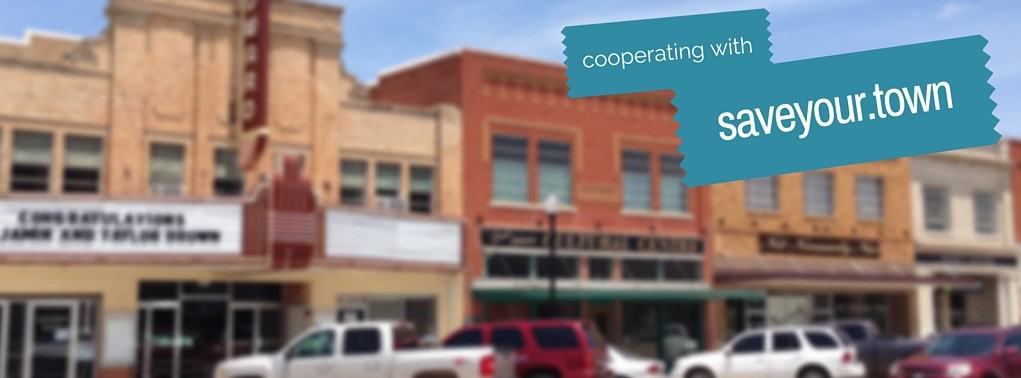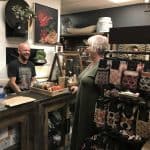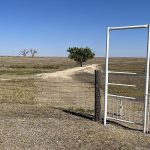
Photo by Becky McCray
We all hold different titles, work in different fields or sectors, but we’re all fighting for the future of our towns and rural places. We want to be a place our children and grandchildren and our nieces and nephews can live a good life. Quality of Life, a prosperous future for our towns, these are things we can all agree on, even if we’re working different ways to get there.
All of us have faced the same drag on our efforts. It’s our own people.
- Wheel-spinning
- Wasted effort
- Meeting after meeting after meeting
- Talking ideas to death, but not getting very far
At the same time that we’re being slowed down by all that drag, we also face social pressures not to fail. No one likes to look stupid in public. Especially in a small town, it feels like everyone is watching, everyone is judging and everyone will know if you mess up and you’ll never hear the end of it. You’ve seen people bring up decades-old failures, just to remind someone that they failed before. Have you ever felt that fear that your idea or project will fail?
Years of this pressure not to fail, of those voices getting inside our heads, can add up.
You can see this in people in your town, people who have learned this lesson so well, who are so worried about risk that they never try anything new, and they don’t want anyone else trying anything new either.
The people who do the most dragging think they’re helping. They’ve told me so. Here’s how one person explained his desire to drag against progress:
“We have too many high-energy people, accustomed to making decisions quickly. Negative people offer a balance, raising questions, slowing down the decision-making process so we can have time to consider the issues, before it’s too late and we’ve spent money on something that turned out to be foolish and ineffective.”
What they’re worried about is making mistakes. The risk of failing very publicly.
You might be tempted to agree with him on his approach to avoid mistakes, but it’s a trap because we’re terrible at judging the risk of failing.
We’re far less likely to fail than we think.
Author Margie Warrell says that using the latest brain imaging technologies, researchers have been able to prove:
- We overestimate the probability of something going wrong.
- We exaggerate the consequences of what might happen if it does go wrong.
- We underestimate our ability to handle the consequences of risk.
- We discount or deny the cost of inaction, and sticking with the status quo.
Once we realize how we’ve all been misjudging risk and trying to slow things down so we don’t make mistakes, we start to see what it is doing to our communities. Decade upon decade of this pressure not to make a mistake, not to fail, is built into our formal organizations, our government bodies, our groups, clubs and associations.
We’ve built the drag and wheel spinning and endless discussion into our organizations thinking that we were dealing with the risk of mistakes.
But as Margie Warrell pointed out, we’re not very good at judging risk.
The net result is that our towns are too closed to new ideas. People can take being closed to new ideas to such an extreme that they end up saying no to everything.
Why this has to change
But our whole society is changing fast. Trendwatching.com says “we’re in the middle of an epic power shift away from government, social organizations, and big business, towards the individual.” We’re seeing regular people accomplishing big things, with no formal organization, no structure, no officers in charge. No one to put the brakes on.
We are crowdsourcing our future, the future of our communities. The power to shape our cities and towns is no longer just in the hands of officials, but now in all of our hands. When we want to accomplish something, we don’t need to form a new committee. We can just make it happen.
What changed? What is causing this shift in power? It’s our ability to communicate, coordinate and work together in new ways. Email, the internet, social networks, all shrunk down into the palm of our hands and we carry it everywhere with us.
These new communications tools mean we’re experimenting with new ways of working together. That’s why we are shifting from formal organizations to working together informally, as needed, and getting things done without all the formality and foot dragging we’re used to.
But it’s slow going, with plenty of people still dragging their feet. We’re stuck using old methods of organizing and working together. We’re drowning in committees, task forces, planning groups, meetings, and all the old ways of doing things that slow us down. We grew up with these methods. They are deeply ingrained in our people and our organizations.
A new method
What we’re missing is a method of reducing the risk of making big mistakes while working together more easily to accomplish things quickly using the tools we have in our hands right now.
This is what I’ve been working on. I’ve listened as people just like you have written to me with real struggles in your small towns. I’ve paid attention to what 473 people like you told us in two rounds of our Survey of Rural Challenges. It’s our own people holding us back, slowing us down, even with the best of intentions, keeping us from moving forward.
I’ve been researching towns that succeeded, change science, behavioral motivation, open networks, crowdsourcing, innovation and how you build a revolution. Pulling lessons from all of those, I’ve come up with a method that reduces the risk of making big mistakes while letting us work together more easily using the tools we have in our hands
An Idea Friendly Method
It’s called the Idea Friendly Method, because our aversion to risk has had us acting idea unfriendly for too long.
You start with your big goal for your community, the thing that you feel will improve your quality of life. You use that goal to Gather Your Crowd. You turn your crowd into a powerful network by Building Connections. And you and your newly-powerful network accomplish that goal by Taking Small Steps.

How to apply the Idea Friendly Method in your town
To help you learn and apply the Idea Friendly Method in your town, Deb Brown and I have created a video and action guide at SaveYour.Town. You’ll learn the Idea Friendly Method in depth, hear examples of how it’s used, and learn specific behaviors to create the most lasting change.
It’s free to NADO attendees in October 2019 only.
New to SmallBizSurvival.com? Take the Guided Tour. Like what you see? Get our updates.










